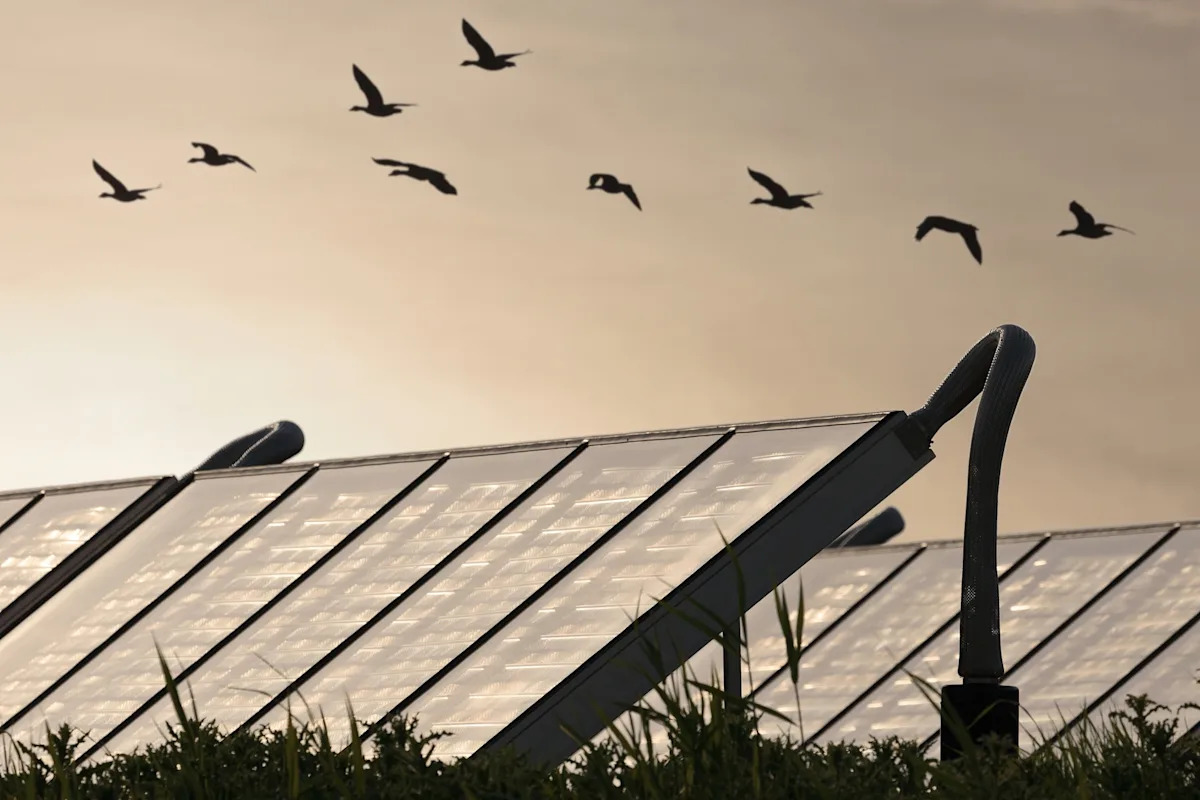Solar farms are helping people power their daily lives with cheap, renewable energy, but the panels also change local biomes.
Bats, specifically, have had to adapt, but emerging research shows they can successfully live alongside solar equipment. The success depends on what’s underneath each panel.
Bryce Donaghue, a graduate biology student at William & Mary, took a different approach to learning about the interaction between bats and solar farms.
He looked closely at the vegetation under the hardware and found that insects were thriving beneath the renewable energy equipment. The discovery inspired him and his graduate mentor, Doug DeBerry.
“When solar energy first became popular, the conventional way to manage the land was to completely clear-cut everything, compact the soil, and cover it up with turf grass,” Donaghue said. “So it becomes one giant lawn.
“Doug and I are asking the question: What if we can make these solar panels not just a win for the environment energetically, but a win for the local flora and fauna?”
Typical solar farms have low-cut grass and less vegetation. Companies maximize how many panels they can fit into each farm, which presents a challenge for bats.
The flat surfaces become sensory traps for them. As a study published in the journal Global Ecology and Conservation observed, they perceive them as open flyways because sound bounces off them differently, causing collisions.
Solar panels also restrict bats’ access to bugs beneath the hardware, which are a necessary food source. Donaghue’s research could change that.
He planted pollinator-supporting plant species around a solar panel farm and gathered over 70,000 sound files during the summer of 2025. The plants attracted insects, which encouraged bats to stop for snacks. Donaghue’s files confirmed the activity.
“I’m still in the early days of my analysis, but preliminary data indicates more activity at the pollinator habitats, which is pretty exciting,” Donaghue said.
“If this turns out to be true, we have more evidence to support the planting of pollinator species on solar farms and evidence that these sites are attractive hunting grounds for bats.”
The food chain is safe if bats maintain their food source around expanding solar farms. They’re essential for dispersing seeds and managing pest populations.
If they can thrive in a world dependent on renewable energy, humans will, too.
Join our free newsletter for good news and useful tips, and don’t miss this cool list of easy ways to help yourself while helping the planet.
